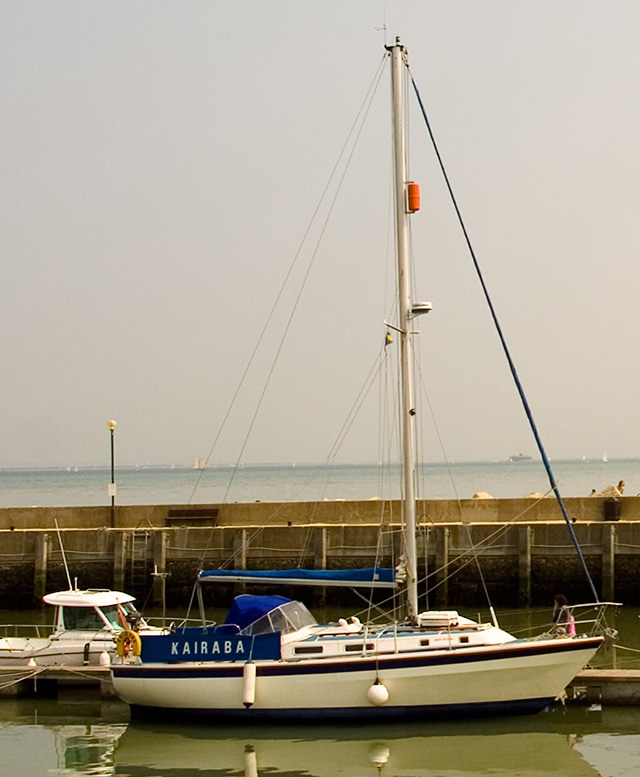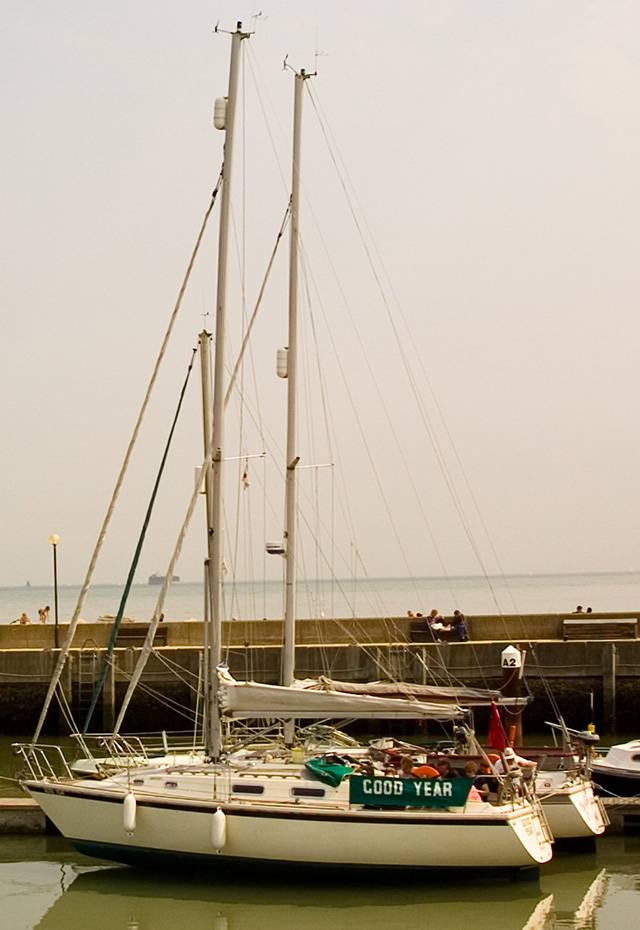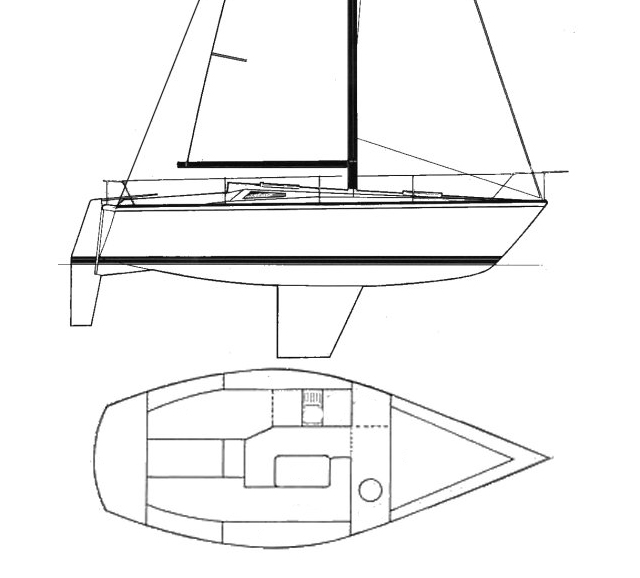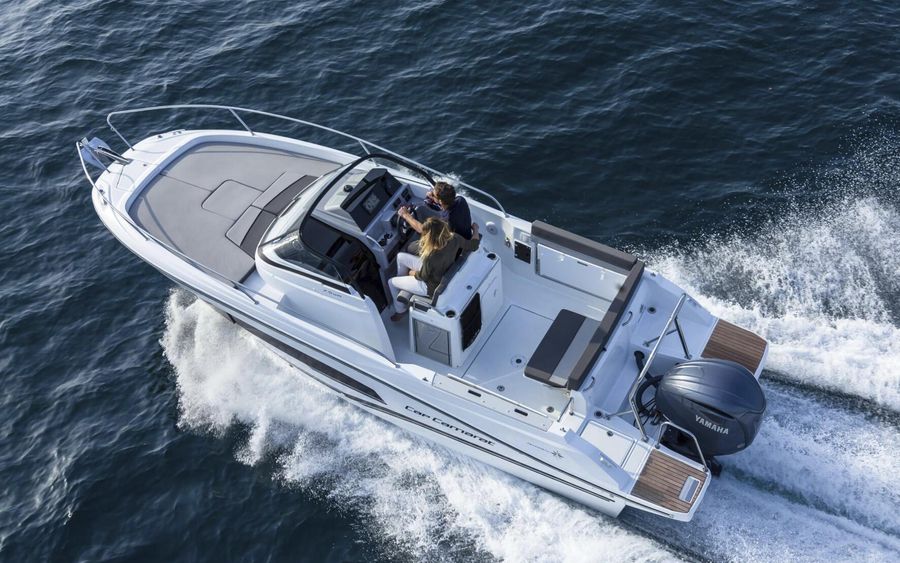Westerly Marine Construction, started life in 1963 building a 22ft fibreglass sailing cruiser, growing rapidly to become Britain’s biggest boat builder by a large margin. By the time the company finally closed its doors almost 40 years later, its range stretched up to almost 50ft.
Westerly’s first product was the Westerly 22 – a distinctive fibreglass boat that offered surprisingly good internal space, twin keels and shallow draught, and an easily handled rig. Over the next four years almost 800 boats based on the same hull were built, including the Nomad, and two stretched versions – the 25 and Windrush. This was a formidable output given that in the early 60s most yards were still building no more than a handful of wooden boats each year.
Westerly Centaur
Westerly turned to Laurent Giles for this model, which was introduced in January 1969. It heralded a second stage of rapid expansion for Westerly – during a production run of over a decade almost 2,500 boats were sold, and the Centaur still holds the record as being the biggest selling British built boat ever.
So what set it apart from its contemporaries? With a beam of 2.6m (8ft 5in) the boat was significantly wider than the then norm for European yachts, although not by American standards. This helped to offer impressive accommodation: there’s 6ft headroom, a separate forecabin, separate heads compartment and good stowage.
For a boat that majored on good accommodation, changes below the waterline were also an important part of the boat’s popularity. The aerofoil shaped twin keels were deeper and slightly toed-in at the front much greater hydrodynamic efficiency and lift than earlier bilge keel boats.
Westerly appears to have negotiated a bulk deal on 23hp Volvo Penta diesel engines at very attractive prices for the Centaur. These engines have mostly been replaced and those that still exist are likely to be close to the end of their lifespan, especially as they were sea water cooled. Given that the originals were oversized, 14hp is ample as a replacement.
Smaller and larger variants followed the launch of the Centaur, with the 23ft Pageant (more than 500 built) launched the following year, and a 31ft range starting in 1972. The latter, named Longbow, Berwick, Pentland and Renown, was available in four variants, covering aft or centre cockpit, and twin or fin keels. In total more than 1,000, including a few with ketch rigs, were sold.
Search all Westerly Centaur for sale in the UK on www.boats.com
GK series
While Westerly is best known for its out-and-out cruising oriented designs, the company also built raceboats and cruiser-racers from the mid 1970s onwards, including a period as builder of the J-Boats range.
The GK24, a joint design by Chris Hawkins and Laurent Giles, was a flush decked, wide beam flyer. It was available in both Quarter Ton race versions and as a cruiser racer with a smaller rig and shallower draught and with either an outboard engine or an inboard diesel.
Given the almost flush deck it would be easy to assume the boat has very little space inside. However, the 2.85m (9ft 4in) beam gives a surprising amount of space, with berths for 4/5 people and a separate heads compartment, although there is only sitting headroom throughout. The GK29, based on a successful Half Ton design, is much more spacious, with full headroom, better stowage a dedicated chart table and berths for 5/6 people.
Under sail both boats are very well mannered and responsive with the potential to outsail many more recent designs. Although they were very racing oriented in their day, by modern standards they are of moderate displacement, with conservative hull shapes. Without the enormous lightweight overlapping genoas of their racing days, they make excellent, easily-handled and capable cruising yachts.
A GK34 followed, which by all accounts was the best of the original series, although only 17 had been sold (compared to 320 GK24s and 182 GK29s) when Westerly Marine Construction was forced to call in the receivers for the first time in 1981. In later years the GK name was revived with the GK33 (based on the Ocean 33) in 1998, although only a handful were sold.
Search all Westerly GK models on www.boats.com
Westerly 33 and Discus
Another of the Laurent Giles designs, this range was launched in 1977 as the Westerly 33.

Capable of long ocean voyages, the Westerly Discus came in numerous varieties built between 1977 and the early 1980s
It’s significantly larger than the 31 series, with more than 15 per cent more beam, a proportionately much longer waterline length and more freeboard. Accommodation was therefore greatly superior, with versions offering berths for up to seven people, plus good stowage and a spacious heads compartment. As with other Westerly models at this time, the 33 was offered with fin or twin keels, centre or aft cockpit and sloop or ketch rigs.
After around 240 boats were built, the 33 was replaced by the Discus in 1980. While the centre cockpit boats had few changes relative to the 33, the aft cockpit boats gained a large bridgedeck to enable a double cabin to be slipped in aft of the main companionway.
As with many other Westerlys, the 33 and Discus have made many long distance voyages. Most notable is Dodo’s Delight, owned by Bob Shepton, who won the 2014 Yachting Journalist’s Association Yachtsman of the Year award in recognition of his three decades of extensive voyaging in the boat, encompassing the Antarctic, Arctic, and most recently a successful double transit of the North-West passage.
Search all Westerly 33 for sale on www.boats.com
Westerly Fulmar
This 32-footer, launched in 1980, a year after the 26ft Griffon, marked another change of designer – this time to Ed Dubois.

The first Ed Dubois design for Westerly, the Fulmar was renowned for excellent heavy weather performance.
Fulmar was quicker and sportier than the previous 31ft range and the 33-footers, yet quickly built a reputation for being a first-class heavy weather boat. Its credentials in this were boosted by the then Westerly Sea School’s fleet of 12 Fulmars that worked throughout the year, even in winter gales.
Despite the extra performance, the Fulmar also offered more accommodation than the 31-footers that it effectively replaced, notably in the forecabin and heads areas. The saloon also benefitted from the new boat’s significantly wider beam. More than 400 Fulmars were built, with both fin and twin keels, when the model was refreshed with an extended sugar scoop stern and lengthened to 33ft in the early 1990s, however, less than a couple of dozen of these were built.
Search all Westerly Fulmar for sale – www.boats.com
Sealord and Oceanlord
These two models, based on the same hull, were the largest in the range that sold in substantial numbers – sales numbers of the bigger Westerlys that followed were disappointing. Like Westerly’s other Ed Dubois designs, especially the Fulmar, the Sealord and Oceanlord are seen as offering excellent sailing characteristics, with the potential for ocean voyaging.
Originally launched in 1983, the 39ft Sealord was the flagship of the range, however, sales slowed to a trickle when the 36ft Corsair was launched three years later – despite its smaller overall length the new boat had very similar accommodation.
However, throughout Westerly’s several incarnations, it was very good at modifying existing designs to extend their life. In 1987 the Sealord was revamped as a 41-footer and renamed the Oceanlord. The broadened and extended transom allowed for a larger owner’s aft cabin with a large double berth, more spacious en suite and improved standing room. This clearly appealed to buyers and a further 100 boats were sold by the time of Westerly’s final demise in 2000.
Search all Westerly Oceanlord for sale – www.boats.com
For more information
The Westerly Owners Association has a comprehensive and informative website here: www.westerly-owners.co.uk
The second-hand cruising yacht market can present excellent value to the knowledgable buyer. Take a look at: Six Bargain Bavarias: Family Cruisers that Won’t Break the Bank, or 10 Top Beneteau Yachts: Figaro, First, Oceanis and Sense to help make sense of the market.




